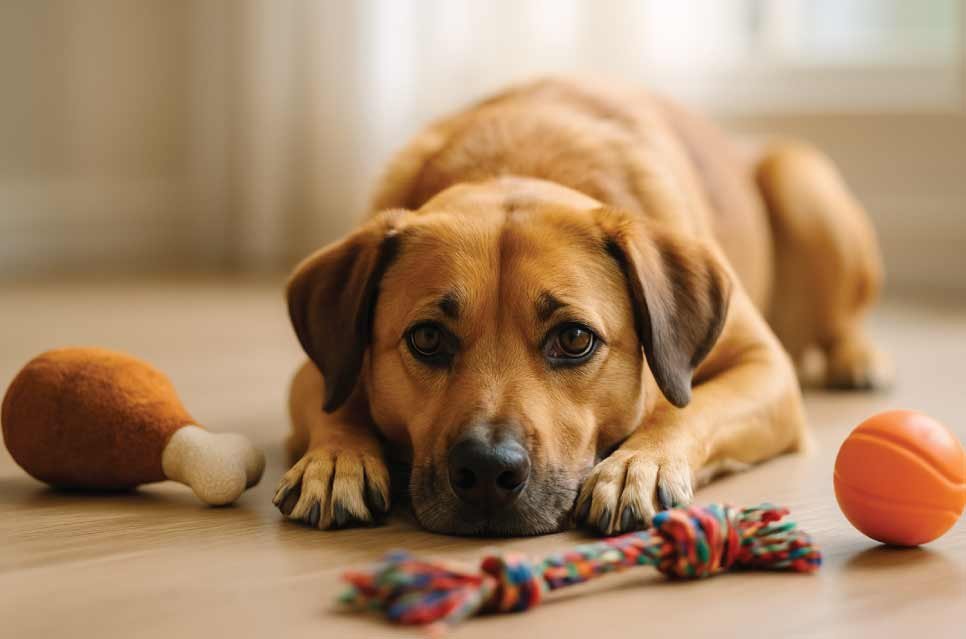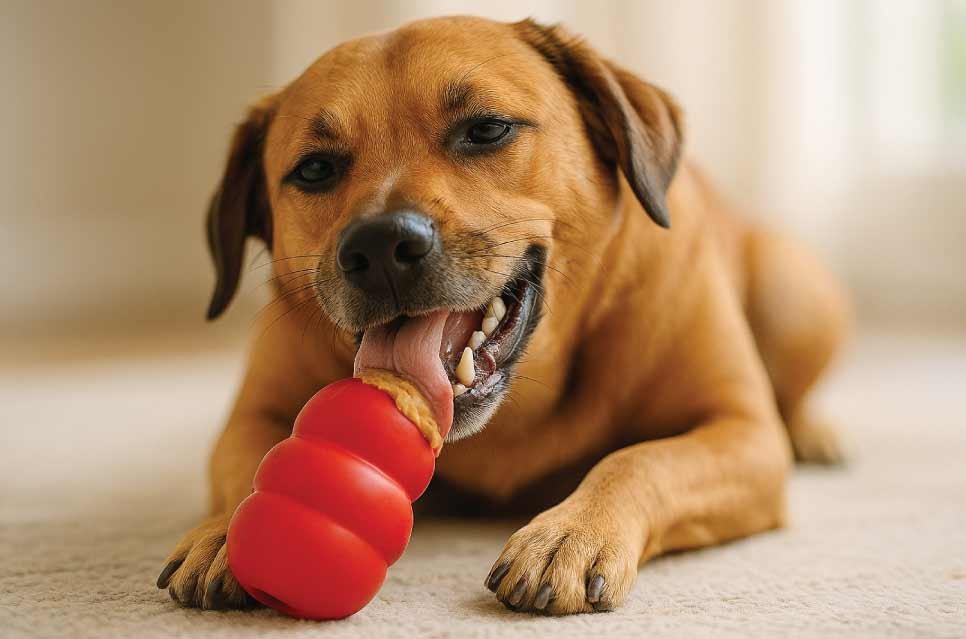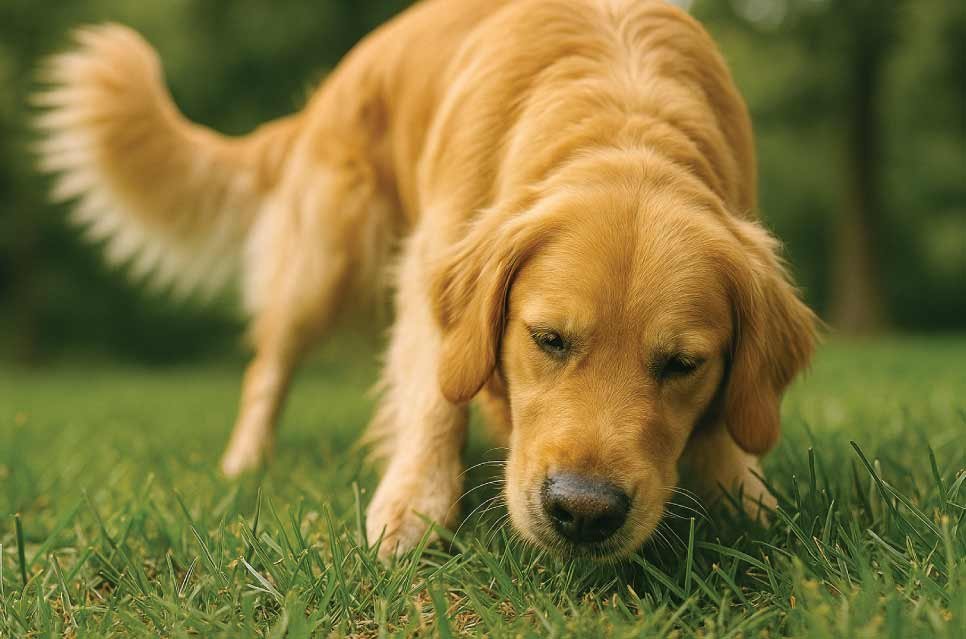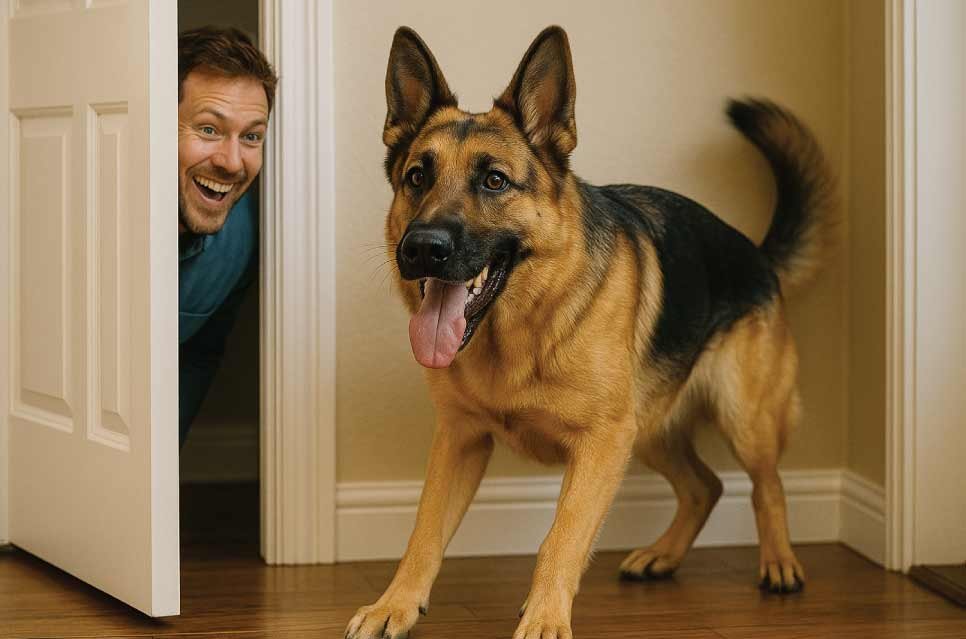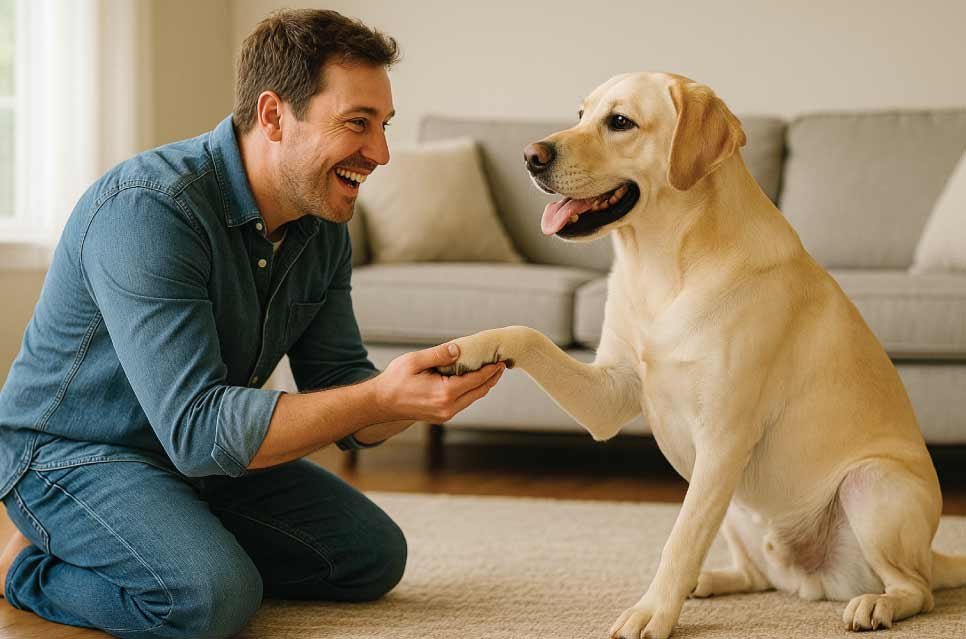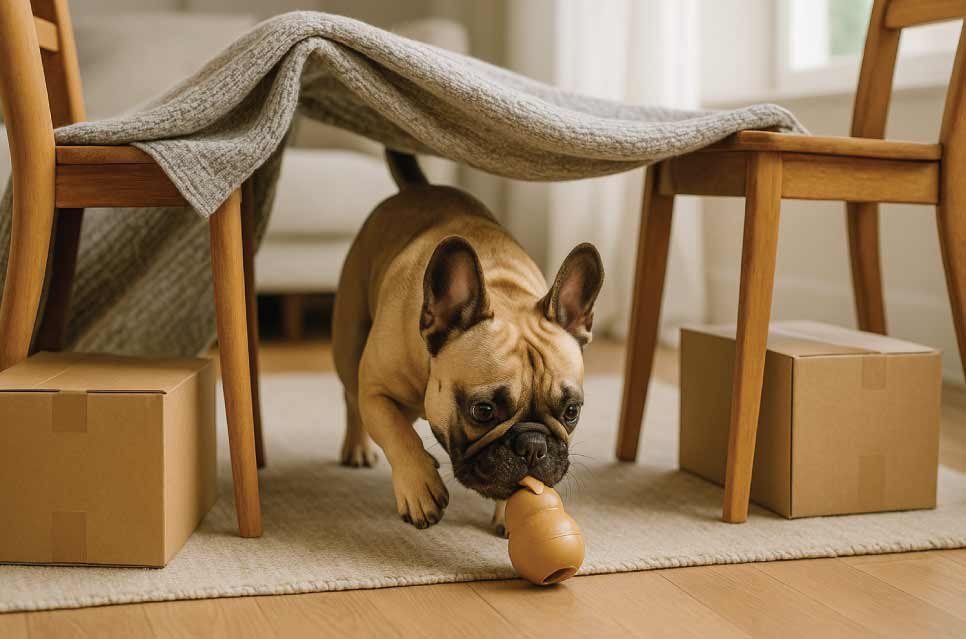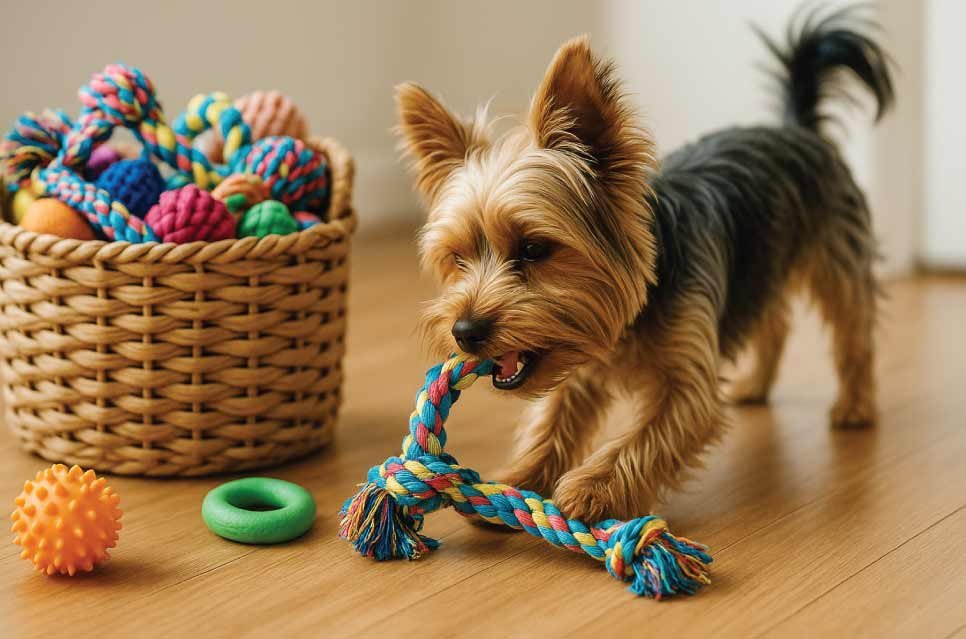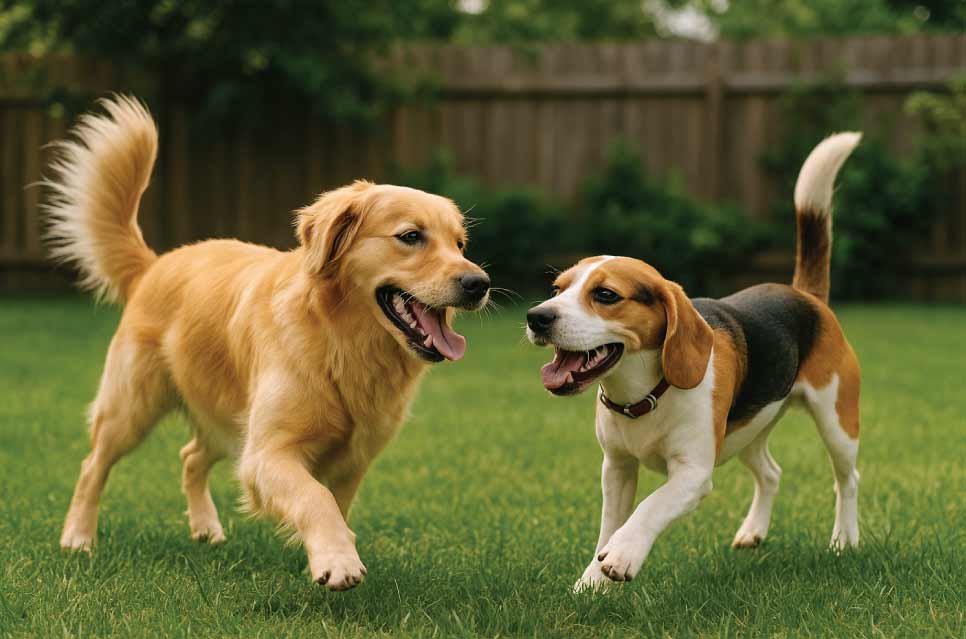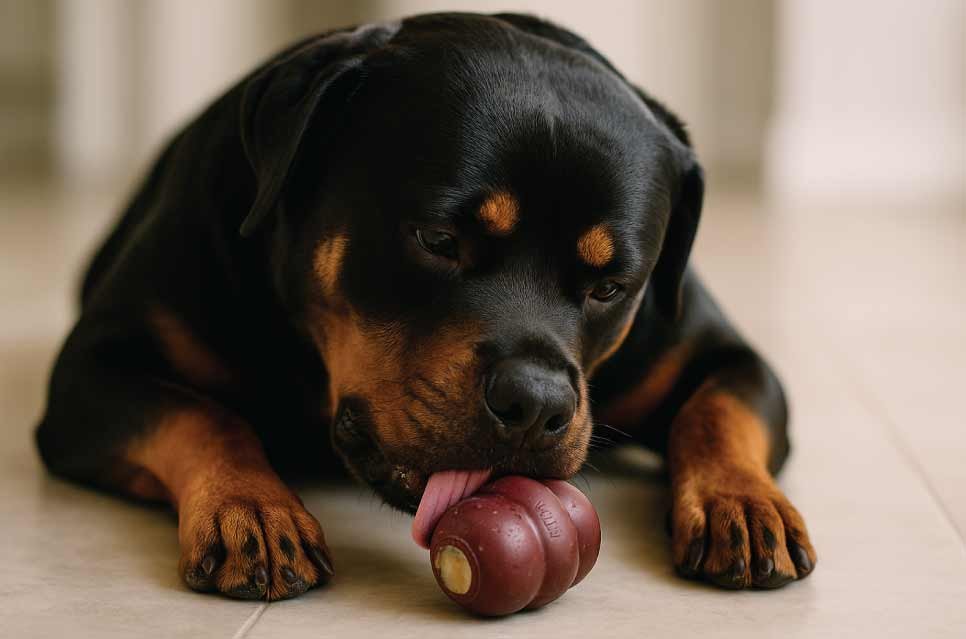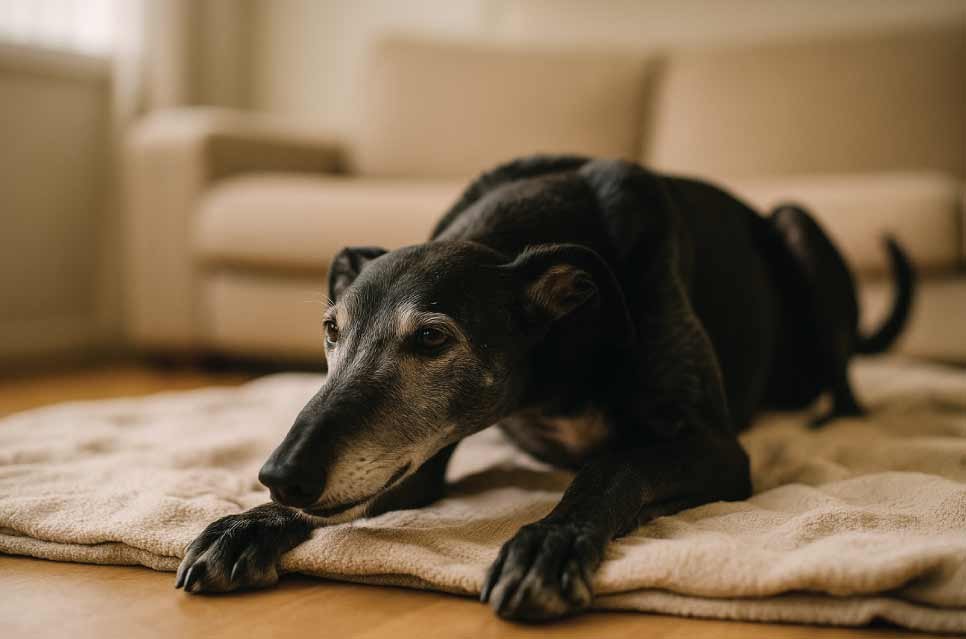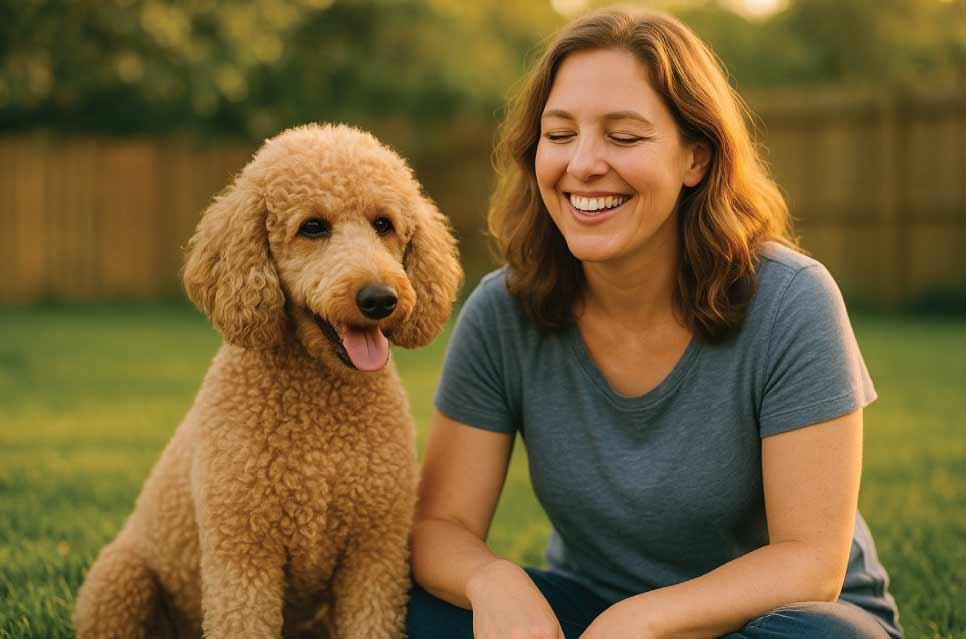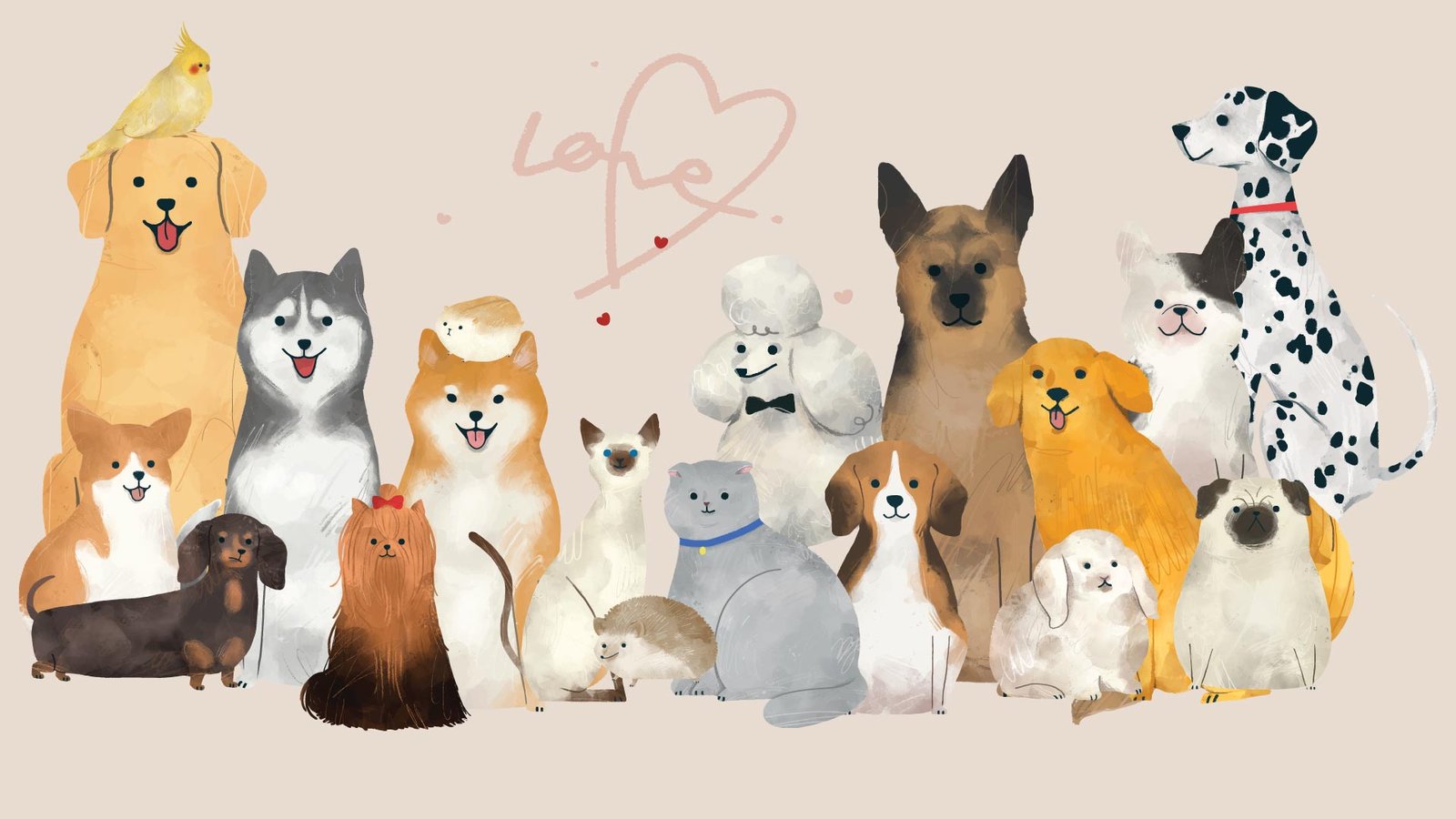Did you know that dog boredom is one of the most common challenges new pet parents face, yet it often goes unnoticed? Many people assume that as long as their pup gets a walk and a meal, they’ll be content. But dogs are curious, intelligent, and social animals who crave more than just the basics.
When boredom sets in, it can show up in ways that are frustrating for both you and your furry friend. Chewed shoes, holes in the backyard, or constant whining aren’t signs of a “bad dog”, they’re your pup’s way of saying, “I need more to do!” Left unaddressed, boredom can lead to destructive behaviors, stress, and even health issues.
The good news? Preventing boredom doesn’t have to be complicated or expensive. With a mix of simple games, engaging toys, and fun daily activities, you can keep your dog entertained, mentally sharp, and emotionally fulfilled. Even better, these moments of play and learning strengthen the bond you share, turning everyday life into a joyful adventure for both of you.
Listen to the Podcast: Prevent Dog Boredom
Why Preventing Dog Boredom Matters
A tired dog isn’t just a happy dog, a stimulated dog is a happy dog. While daily walks are essential, they’re only part of the picture. Dogs need both physical exercise and mental challenges to thrive. Just like us, they feel more content and calm when their bodies and brains get a workout.
When you make enrichment a regular part of your dog’s life, the benefits go far beyond burning off energy:
- Better behavior: A busy mind has less time to dream up mischief. Dogs with enough stimulation are less likely to chew furniture, bark excessively, or dig up the garden.
- Stronger bond: Playtime, training, and problem-solving activities build trust and deepen the connection between you and your pup.
- Improved well-being: Enrichment keeps your dog’s mind sharp, reduces stress, and supports long-term health and happiness.
Of course, no two dogs are exactly alike. A playful puppy may need fast-paced games, while a senior dog might prefer slower sniffing activities or gentle puzzle toys. Breed also plays a role: herding breeds often crave problem-solving challenges, while scent hounds love nose work. The key is to tailor activities to your dog’s age, breed, and personality so they get the right balance of fun and fulfillment.
Interactive Toys and Puzzle Feeders
Dogs are natural problem-solvers, and puzzle toys give them the perfect outlet to put those skills to work. Instead of eating kibble from a plain bowl, puzzle feeders or treat-dispensing toys turn mealtime into a fun challenge. This not only slows down fast eaters but also keeps your pup’s mind busy and satisfied.
Some of the most popular enrichment tools include:
- Kongs: Stuff them with peanut butter, canned food, or kibble. Freeze for a longer-lasting activity.
- Treat-dispensing balls: These roll around as your dog nudges them, rewarding persistence with tasty bites.
- Slow feeders: Designed with ridges or patterns that make dogs “work” for their food instead of gulping it down.
Getting started is easy, but it’s important to set your dog up for success. Begin with simple puzzles that release treats quickly so your pup doesn’t get frustrated. As they build confidence, you can gradually introduce more challenging feeders that require extra nudging, pawing, or problem-solving.
Another pro tip? Rotate puzzle toys every few days. Just like kids with toys, dogs get bored if they see the same puzzle all the time. Bringing back a “forgotten” toy can make it feel brand new again, sparking fresh excitement and curiosity.
Puzzle play isn’t just about food either, it’s about giving your dog a chance to think, experiment, and win. And when they finally figure it out? You’ll see the proud “I did it!” sparkle in their eyes.
Nose Work and Scent Games
If there’s one superpower every dog has, it’s their nose. While we rely mostly on our eyes, dogs experience the world primarily through scent, and giving them sniffing games is like handing them their favorite puzzle book.
You don’t need fancy equipment to get started. Try these simple scent games at home:
- Kibble scatter: Take a handful of kibble and toss it into the grass or across the living room floor. Your dog will happily sniff and hunt until every piece is found.
- Treat-in-a-blanket: Roll up a blanket with small treats tucked inside. Let your dog paw, nose, and nudge their way to the hidden snacks.
- “Find it” with toys: Hide your dog’s favorite toy behind furniture, under a pillow, or in another room. Encourage them with a cue like “Find it!” and celebrate when they track it down.
So why is nose work so powerful? Sniffing is both relaxing and deeply satisfying for dogs. It taps into their natural instincts to forage and explore, providing mental stimulation that tires them out in a healthy, non-stressful way. Even just 10 minutes of focused scent work can be more fulfilling than a longer walk with no sniffing allowed.
Plus, these games build confidence. When your dog succeeds in finding that treat or toy, they feel accomplished, and you get the joy of seeing their tail wag in pure satisfaction.
Hide and Seek with You or Toys
Dogs love a good game of hide and seek, and it’s more than just fun. It gives them a chance to use their nose, practice recall, and build confidence while playing with their favorite people.
Start simple:
- Hide yourself: Ask your dog to sit and stay (or have a helper hold them), then hide in an easy spot like behind a door. Call their name once, and cheer when they find you. This game turns recall practice into something exciting instead of a chore.
- Rotate hiding spots: As your dog gets the hang of it, hide in trickier places, upstairs, under a blanket, or even outside. Keep the game short and positive so your pup stays eager.
- Hide toys or family members: Mix it up by hiding their favorite toy or asking another family member to take a turn. Dogs enjoy the variety, and it keeps them guessing about what (or who!) they’ll discover.
The best part? Hide and seek strengthens your bond. Every successful “find” builds trust and joy, making your dog more confident and more likely to respond quickly when you call them in everyday situations. It’s a win-win: you get a reliable recall, and they get a game that feels like a treasure hunt.
Training as Play
Training doesn’t have to feel like “work”, for your dog, it can be one of the most enjoyable games of the day. When sessions are short, positive, and sprinkled with rewards, your pup will see learning as playtime with you.
Keep it light and fun with 5-10 minute sessions a couple of times a day. Long training marathons can be tiring or frustrating, especially for puppies or high-energy breeds that struggle to focus. Quick bursts keep your dog engaged and eager to participate.
Once your dog has mastered the basics like sit, stay, and down, you can move on to tricks that are both entertaining and mentally stimulating. Some favorites include:
- Spin in a circle, easy to teach with a treat lure and looks impressive!
- Shake paw or high-five, a classic that also builds polite greeting manners.
- Roll over, a bit more advanced, but many dogs love the challenge.
- Play dead or bow, fun party tricks that strengthen focus and patience.
What makes training so rewarding is the use of positive reinforcement. Whether it’s treats, praise, or playtime with a favorite toy, rewarding effort keeps your dog motivated. Even small successes deserve celebration, your enthusiasm tells your pup, “Yes, you did it right!”
And the benefits go far beyond teaching commands. Training as play builds trust, sharpens problem-solving skills, and deepens the bond between you and your dog. Plus, the mental workout often tires them out just as much as a walk, which is especially handy on busy or rainy days.
So grab some treats, pick a fun trick, and turn training into your dog’s favorite game of the day.
DIY Enrichment Projects
You don’t need to buy expensive gear to keep your dog entertained, some of the best enrichment activities can be created with everyday household items. DIY projects are not only budget-friendly, but they also give you a chance to get creative and tailor activities to your dog’s personality.
One simple option is setting up an indoor obstacle course. Use chairs to create a tunnel, drape a blanket over a coffee table for a crawl space, or place cushions on the floor to practice balance. Encourage your dog to weave, jump, and explore, rewarding them with praise or small treats along the way. This is a fantastic activity for rainy days or when outdoor play isn’t possible, and it can be adjusted for dogs of all ages and sizes.
Another easy project is a homemade puzzle feeder. Grab a muffin tin, place a few pieces of kibble in each cup, and cover them with tennis balls. Your dog will need to nudge or paw at the balls to reach the food. You can also cut holes in a cardboard box and hide treats inside for a low-cost, eco-friendly puzzle. The key is to make it challenging enough to spark curiosity, but not so hard that your dog gives up.
For extra variety, try a few rainy day games:
- Fill a cardboard tube (like a toilet paper roll) with kibble, fold the ends, and let your dog figure out how to get the treats out.
- Create a “snuffle box” by crumpling paper or towels in a container with hidden snacks.
- Freeze toys or treats in a shallow container of water for a sensory digging activity indoors.
The beauty of DIY enrichment is that it transforms ordinary moments into fun adventures. With a little imagination, your living room can become a playground, and your recycling bin can turn into a treasure chest of puzzles. Most importantly, your dog gets the mental and physical stimulation they crave, even when stuck inside.
Rotating Toys and Creating Novelty
Believe it or not, less really can be more when it comes to dog toys. Dogs, like kids, can get bored if every toy they own is always lying around. When they see the same pile every day, the excitement fades. But when you put a few toys away and reintroduce them later, it’s like they’re brand new again.
A good rule of thumb is to keep only a small selection of toys out at once, maybe three to five. These could include a chew toy, a squeaky toy, and a puzzle feeder. After a few days, switch them out for different ones from your stash. This rotation keeps playtime exciting without overwhelming your dog with too many options.
You can also make old toys feel “refreshed” with a little creativity. Toss a toy into the wash to get rid of old scents, stuff it with a new treat, or use it in a different type of game than usual. Sometimes even playing with a toy in a new room or outdoors can make it feel different and fun again.
The best part? Rotating toys saves you money and keeps clutter down. You don’t have to constantly buy new items to keep your dog entertained. Instead, you’re teaching your pup that every few days brings a little surprise, which helps maintain curiosity and enthusiasm for play.
By keeping toys on rotation, you ensure your dog always has something engaging to look forward to, without emptying your wallet or stuffing your home with extras.
Social Enrichment Opportunities
Just like us, many dogs thrive on social interaction, playing with other pups can be one of the best forms of enrichment. When done safely and thoughtfully, social play builds confidence, burns energy, and teaches valuable communication skills.
One of the easiest ways to start is by arranging doggy playdates with friends, neighbors, or family members who have friendly, well-matched dogs. Choose playmates with a similar energy level and size when possible, especially for puppies or small breeds. Keep early sessions short and positive, offering praise and treats to both dogs as they interact.
Dog parks can also be great, but they aren’t the right fit for every dog. When they’re good, they provide open space, new friends, and lots of stimulation. However, crowded parks can be overwhelming, especially for shy, reactive, or senior dogs. If your pup seems stressed, sticks close to you, or shows signs of discomfort, it may be better to skip the park and stick with smaller, controlled play sessions.
Even at home, social play can be enriching when supervised. Invite a calm doggy friend over, let them play tug-of-war with two ropes, or explore the backyard together. The key is supervision, you want to ensure play stays safe and fun, without escalating into roughness or stress.
For dogs that don’t enjoy other canine company, social enrichment can also mean spending time with people. Gentle interactions with trusted friends, family members, or children (when supervised) still provide variety and stimulation.
At its heart, social enrichment is about giving your dog safe opportunities to connect. Whether it’s chasing a ball with a buddy, wrestling with a sibling, or simply sniffing alongside another dog on a walk, these moments add joy and help your pup feel like part of a bigger pack.
Frozen and Long-Lasting Treat Activities
When the weather gets warm, or when your dog needs a solo activity, frozen treats are a lifesaver. They keep pups busy, cool, and satisfied, while giving their brains and jaws a healthy workout.
Here are a few favorite ideas:
- Frozen Kongs:
- Fill with peanut butter, mashed banana, or wet food.
- Pop it in the freezer overnight for a long-lasting challenge.
- Broth cubes:
- Freeze low-sodium chicken or beef broth in ice cube trays.
- Serve as a refreshing snack on hot days.
- Fruit mix:
- Dog-safe fruits like blueberries, strawberries, or watermelon pieces can be frozen and given as cooling nibbles.
- Perfect for dogs who love crunchy textures.
- DIY ice block:
- Freeze toys, treats, or kibble in a shallow dish of water.
- Your dog will paw and lick at the ice until they uncover the treasures inside.
When making frozen snacks, remember to stick with safe foods:
- Go-to ingredients: plain yogurt, pumpkin purée, peanut butter (xylitol-free), fruits, or veggies like carrots.
- Avoid harmful foods like grapes, raisins, onions, or chocolate.
Why they’re so great:
- Perfect for hot weather to keep your pup cool.
- Useful for alone time, since they provide a calm, independent activity.
- Great for chewers, giving them an outlet that protects furniture and shoes.
With just a little prep, frozen treats can turn a boring afternoon into an exciting (and tasty!) enrichment session.
Personal Experience Corner (PetSweetJoy’s Story)
When I think about the power of enrichment, my heart always goes to Lazy, my sweet Spanish Galgo. At fourteen years old, she is well into her senior years, yet her love for gentle games and mental challenges hasn’t faded one bit. In fact, enrichment has been one of the keys to keeping her sharp, content, and connected to me even as her body has slowed down.
These days, Lazy doesn’t run as fast as she once did, but her nose still works like magic. Simple scent games, like hiding treats in a blanket or scattering kibble in the grass, light up her eyes and get his tail wagging. On rainy afternoons, I’ll roll up a towel with little snacks tucked inside, and watching her patiently sniff and unroll it reminds me that joy doesn’t have to be complicated.
What I’ve learned is that enrichment isn’t just for puppies bursting with energy, it’s valuable at every stage of life. For seniors like Lazy, it keeps the mind active, eases boredom, and brings moments of play that feel just as special as in her younger days. Most of all, it strengthens our bond. Each game, each solved puzzle, is another shared moment of happiness between us.
Enrichment is not about age, it’s about connection. Whether your dog is a bouncy pup or a wise old friend, these little activities can bring so much joy into their days, and yours too.
Conclusion
Keeping your dog entertained isn’t about buying the fanciest toys or filling every minute with activity. It’s about creating simple, consistent moments of mental and emotional engagement that make your dog feel happy, secure, and loved. From puzzle feeders and scent games to hide-and-seek and frozen treats, enrichment turns ordinary days into adventures your pup will look forward to.
The best part? These activities don’t just keep boredom at bay, they strengthen the bond between you and your furry friend. Every “find it” game, every solved puzzle, every playful training session becomes another thread in the fabric of trust and joy you share.
And while enrichment keeps your dog’s mind busy, don’t forget the importance of balancing their body’s needs too. For a deeper look at how to make sure your pup is getting the right amount of exercise and rest, visit our companion guide: A Tired Dog is a Happy Dog? Finding the Balance. Together, these two approaches, mental stimulation and balanced physical activity, create the recipe for a truly content, well-rounded dog.
So why not start today? Pick one or two of the ideas from this list, try them out this week, and watch how quickly your dog’s eyes light up with excitement. A happy, enriched dog isn’t just calmer and healthier, they’re also the best kind of companion: one who feels connected, fulfilled, and loved.
Prevent Dog Boredom: Frequently Asked Questions (FAQs)
Common signs of boredom include chewing on furniture, digging in the yard, excessive barking or whining, and following you around restlessly. Some dogs may also pace or get into mischief just to get your attention.
Walks are important, but they aren’t always enough. Dogs need variety and mental challenges in addition to physical exercise. Adding sniffing opportunities, short training sessions, or puzzle feeders will make a walk even more enriching.
Absolutely. Seniors often benefit even more from mental games because they may not be as active physically. Simple scent games, slow puzzle feeders, or gentle hide-and-seek keep their minds sharp without straining their bodies.
Not at all! Rotating toys every few days and refreshing old ones can keep things exciting. You can also make DIY puzzles using cardboard boxes, muffin tins, or rolled-up towels.
Every dog is different, but even 15–30 minutes a day of interactive play, puzzles, or training can make a big difference. Some high-energy breeds may need more, while older or calmer dogs may be satisfied with less.
Start simple. Choose an easy toy that releases treats quickly so your dog builds confidence. Use high-value rewards like chicken or cheese at first. As your dog “gets it,” you can gradually increase the challenge.

